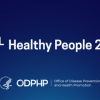You are looking at an archived version of our site. Please visit thepcc.org for a fresh, new experience!
Health Disparities & Social Determinants of Health (SDOH)
As patients enter the healthcare system, primary care is typically their first stop. Because of this, primary care clinicians have a unique opportunity to develop relationships with patients and communities. This also enables them to get a glimpse of the hardships that a particular patient or group of patients is dealing with and see how that can affect their overall well-being. As the healthcare system, and primary care in particular, shifts away from a transactional system, to one more focused on high quality, comprehensive care, these outside factors that often play a significant role in patients’ lives must be accounted for.
The CDC defines health disparities as preventable differences in the burden of disease, injury, violence or opportunities to achieve optimal health that are experienced by socially disadvantaged populations. It defines the social determinants of health as conditions in the places where people live, learn, work, and play. While several of these factors or locations fall out of the traditional sphere of primary care, a well-organized and coordinated primary care team should have the resources to help patients beyond their medical needs.
Resources

In Their Words: Consumers' Vision for a Person-Centered Primary Care System | November 2019
American Institute for Research, Gordon and Betty Moore Foundation | October 2015
Choosing Wisely, IPFCC, PCPCC | October 2018
- ‹ previous
- 3 of 15
- next ›
News
April 21, 2022 | The Hill
April 20, 2022 | Centers for Medicare and Medicaid Services
April 7, 2022 | HHS Office of Disease Prevention and Health Promotion
March 22, 2022 | Physicians Foundation
March 27, 2022 | Yakima (Washington) Herald-Republic
- ‹ previous
- 3 of 47
- next ›
Events & Media
March 19, 2021 | Association of State and Territorial Health Officials
March 12, 2021 | Association of State and Territorial Health Officials
March 5, 2021 | Association of State and Territorial Health Officials
- ‹ previous
- 3 of 20
- next ›
Related Content
Pages
Pages
Secondary menu
Copyright © 2024 Primary Care Collaborative











